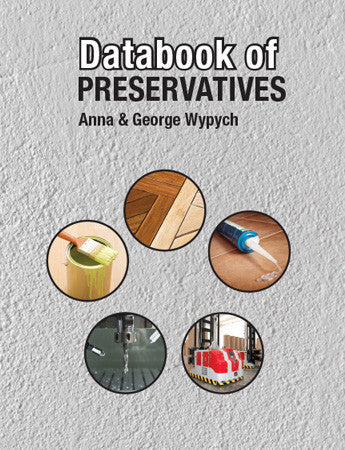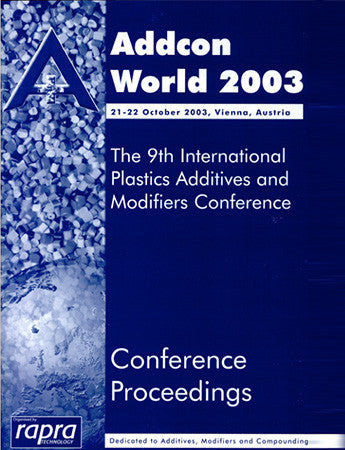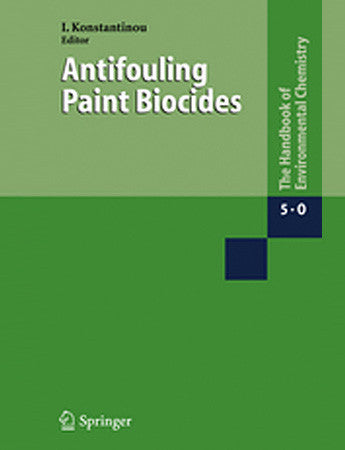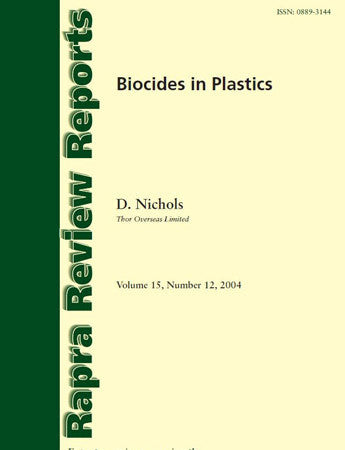Databook of Preservatives contains data for Preservatives used for products during storage and use. The following groups are included in the book:
· Film preservatives,
· Wood preservatives,
· Fiber, leather, rubber and polymerized materials preservatives,
· Construction material preservatives,
· Preservatives for liquid cooling and processing systems,
· Slimicides,
· Working or cutting fluid preservatives.
The selection includes generic and commercial products, which are approved for use in the European Union and/or in the USA. The data on generic materials come from numerous sources and thus usually contain the most extensive information. The commercial biocides include only data given by their manufacturers. This permits comparison of properties coming from different sources.
The information on each biostabilizer included in the Databook of Preservatives is divided into five sections: General information, Physical properties, Health and safety, Ecological properties, and Use & Performance. The data belong to over 100 data fields, which accommodate a variety of data available in source publications. The description of each section below gives more detail on the composition of information.
In General information section, the following data are displayed: name, CAS #, EC number, Acronym, Chemical category, Common name, Common synonym, IUPAC name, Molecular structure, Molecular formula, Molecular mass, Mixture, RTECS number, Product contents, Used in US, Used in EU
Physical-chemical properties section contains data on State, Odor, Color, Boiling point, Melting point, Coefficients of Antoine equation: A, B C, Density, Relative permittivity, Hansen solubility parameters, Hildebrand solubility parameter, Henry's law constant, pH, Refractive index, pH, Surface tension, Solubility in water and solvents, Specific heat, Vapor density, Vapor pressure, Viscosity
Health and safety section contains data on Flash point, Flash point method, Autoignition temperature, Explosive LEL, Explosive UEL, NFPA Health, NFPA Flammability, NFPA Reactivity, HMIS Health, HMIS Fire, HMIS Reactivity, HMIS Personal protection, UN number, UN Risk Phrases, R, UN Safety Phrases, S, DOT Hazard Class, UN/NA hazard class, UN packaging group, ICAO/IATA Class, IMDG Class, TDG class, Proper shipping name, Rat oral LD50, Mouse oral LD50, Rabbit dermal LD50, Inhalation rat LC50, Route of entry, Skin irritation, Eye irritation (human), Ingestion, Inhalation, First aid: eyes, skin, and inhalation, Target organs, Carcinogenicity by IARC, NTP, and OSHA, Mutagenicity, Reproduction/Developmental toxicity, and TLV - TWA 8h (ACGIH, NIOSH, OSHA)
Ecological properties section contains data on Biodegradation probability, Aquatic toxicity LC50 (Algae, Rainbow trout, Bluegill sunfish, Fathead minnow, and Daphnia magna, Zebra fish), Bioconcentration factor, and Partition coefficient (log Kow).
Use & performance section contains information on Manufacturer, Outstanding properties, Recommended for polymers, Recommended for products, Features & benefits, Active against microorganisms, Concentration of active ingredients
The book also contains introductory chapter in which general indicators of performance of biocides are discussed and a chapter containing information on the data fields included in the description of individual biostabilizers.
1 Introduction
2 Information on data fields
3 Preservatives
3.1 Acetal aldehyde-releasing compounds
3.2 Acid esters
3.3 Acids
3.4 Active halogen products
3.5 Alcohols
3.6 Aldehydes
3.7 Amides
3.8 Azoles
3.9 Carbamates
3.10 Formaldehyde-releasing compounds
3.11 Haloalkylthio compounds
3.12 Heterocyclic N,S-compounds
3.13 Metal-containing products
3.14 Oxidizing agents
3.15 Phenolics
3.16 Polymeric materials
3.17 Pyridine derivatives
3.18 Quaternary ammonium compounds and other surface active agents
3.19 Other (not included) products
Anna Wypych, born in 1937, studied chemical engineering and polymer chemistry and obtained M. Sc. in chemical engineering in 1960. The professional expertise includes both teaching and research & development. Anna Wypych has published 1 book (MSDS Manual), 6 scientific papers, 3 databases, and obtained 3 patents. She specializes in polymer additives for PVC and other polymers and evaluates their effect on health and environment.
George Wypych has a Ph. D. in chemical engineering. His professional expertise includes both university teaching (full professor) and research & development. He has published 14 books: PVC Plastisols, (University Press); Polyvinylchloride Degradation, (Elsevier); Polyvinylchloride Stabilization, (Elsevier); Polymer Modified Textile Materials, (Wiley & Sons); Handbook of Material Weathering, 1st, 2nd, 3rd, and 4th Editions, (ChemTec Publishing); Handbook of Fillers, 1st and 2nd Editions, (ChemTec Publishing); Recycling of PVC, (ChemTec Publishing); Weathering of Plastics. Testing to Mirror Real Life Performance, (Plastics Design Library), Handbook of Solvents, Handbook of Plasticizers, Handbook of Antistatics, Handbook of Antiblocking, Release, and Slip Additives, PVC Degradation & Stabilization, The PVC Formulary (all by ChemTec Publishing), 47 scientific papers, and he has obtained 16 patents. He specializes in polymer additives, polymer processing and formulation, material durability and the development of sealants and coatings. He is included in the Dictionary of International Biography, Who's Who in Plastics and Polymers, Who's Who in Engineering, and was selected International Man of the Year 1996-1997 in recognition for his services to education.




